Setting the Stage for Effective Healthcare Communication
Communication in healthcare is the cornerstone of safe, effective, and compassionate patient care. This article explores the critical role that communication between care teams and families plays in improving health outcomes, enhancing patient safety, and fostering collaboration. We delve into why communication matters, identify barriers, and offer strategies and evidence-based practices that empower both healthcare providers and families to partner successfully throughout care journeys.
The Vital Role of Communication in Healthcare Teams
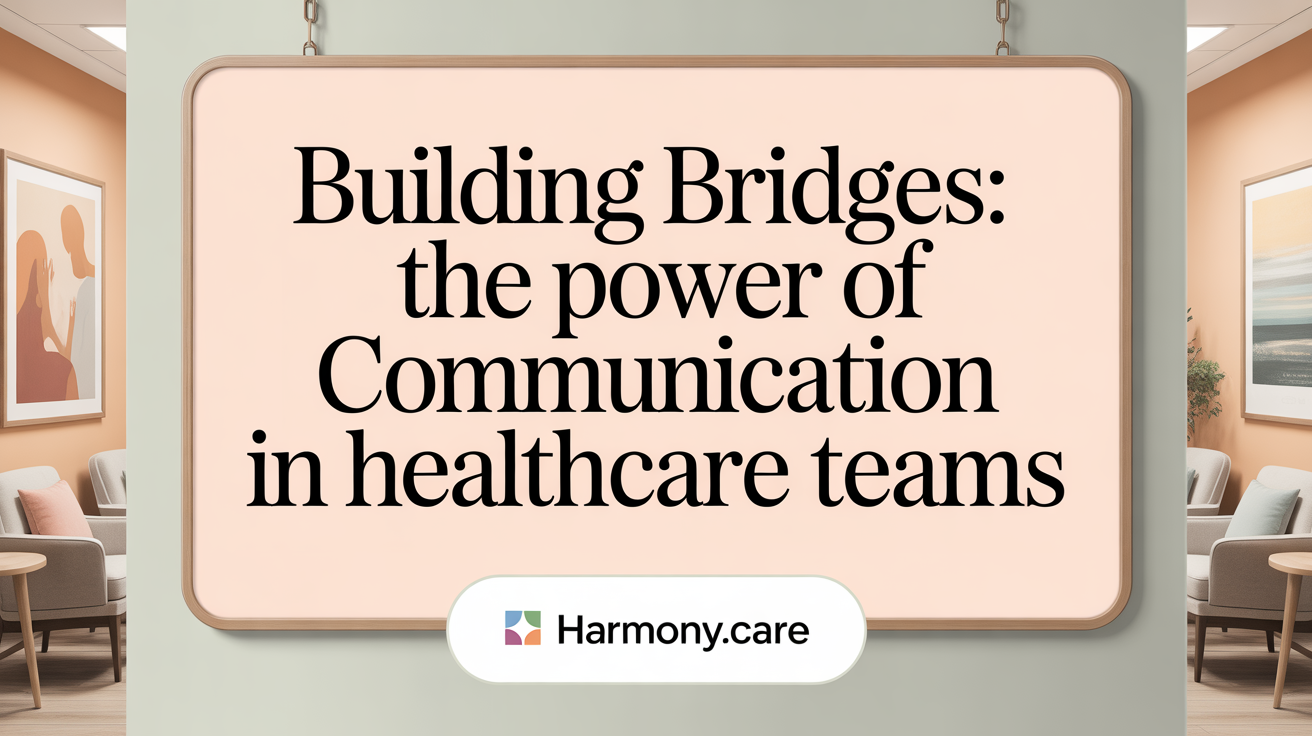
Why is communication important in healthcare teams?
Effective communication is foundational for high-quality patient care and safety within healthcare teams. When team members such as physicians, nurses, pharmacists, and administrators communicate clearly, they share accurate and timely information, reducing errors and misunderstandings.
Good communication fosters coordination—each professional’s role complements others', allowing for seamless collaboration. This is especially crucial during complex procedures, shifts changes, or care transitions where information must be passed accurately.
Beyond patient safety, communication impacts organizational efficiency. It streamlines workflows, optimizes resource use, and ensures compliance with legal and regulatory standards like HIPAA. Strong communication skills also improve crisis management, help resolve conflicts, and actively involve patients and families in care decisions.
Overcoming barriers such as language differences, hierarchical attitudes, and environmental noise is vital. Healthcare teams utilize structured tools like SBAR or checklists to enhance clarity. Technology, including electronic health records (EHRs) and telemedicine, further supports real-time information sharing. Overall, prioritizing effective communication cultivates a collaborative culture, leading to better health outcomes and increased patient trust.
How does coordination and collaboration among professionals impact patient safety?
Efficient teamwork and mutual respect among healthcare providers prevent lapses that could harm patients. Coordinated efforts during patient handoffs, medication management, and emergency response reduce the occurrence of errors. Trust and respect foster open dialogue, encouraging team members to speak up about concerns.
Structured communication methods and ongoing training improve the quality of interactions. When healthcare professionals communicate well, they make well-informed decisions faster, resulting in timely treatments and fewer adverse events.
What is the impact of communication on organizational efficiency?
Effective communication enhances organizational workflows, from staff scheduling to policy implementation. Clear protocols and shared information prevent delays and duplicated efforts. Regular team meetings and use of communication platforms foster transparency.
In crisis situations, quick and accurate messaging helps contain issues and protect patients and staff. Moreover, open communication with patients and their families improves satisfaction and engagement, which correlates with better adherence and health outcomes.
Utilizing communication as a strategic tool aligns team efforts, supports compliance, and improves overall healthcare delivery—benefiting both the organization and the patients it serves.
Purpose and Impact of Communication Between Providers, Patients, and Families
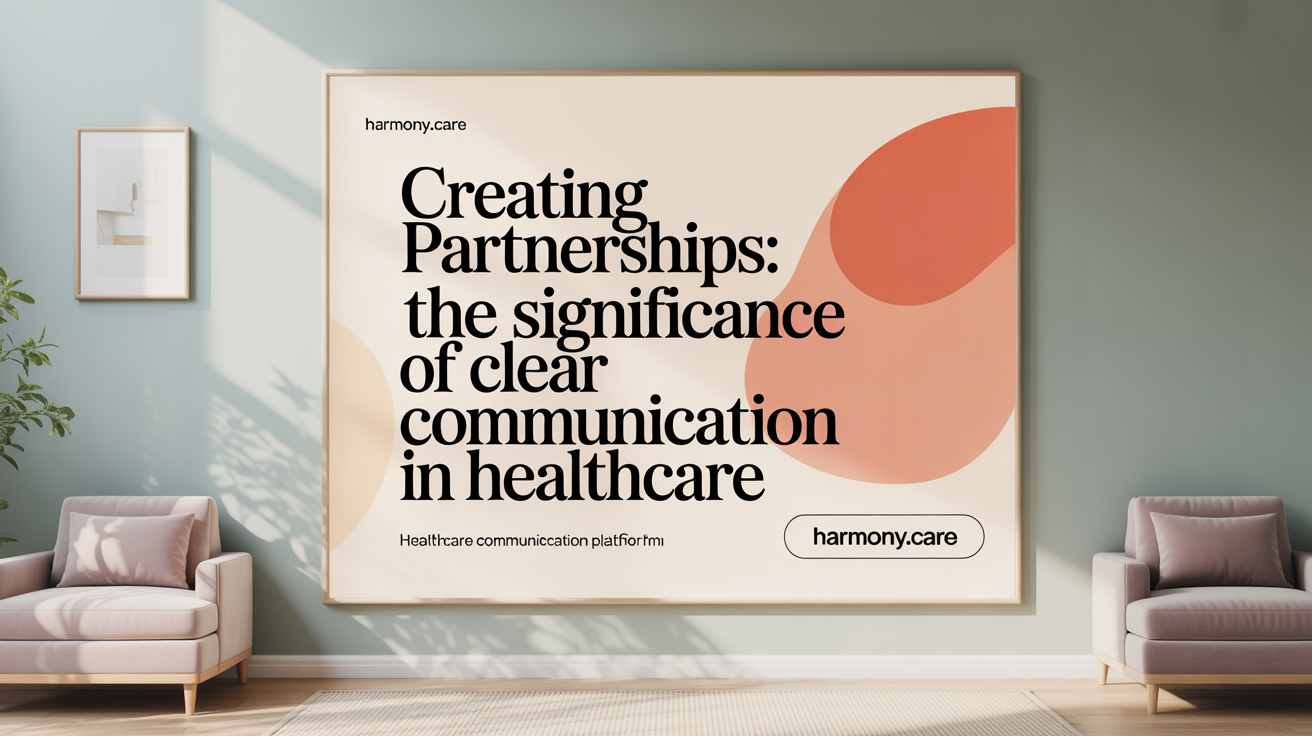
What is the purpose of communication between healthcare providers, patients, and families?
Effective communication among healthcare providers, patients, and families serves as the foundation for high-quality, patient-centered care. Its primary goal is to ensure that all parties clearly understand the patient’s health status, treatment options, and care plans. This transparency helps patients and families make informed decisions, which are crucial for adherence and positive health outcomes.
Communication also builds trust and fosters a therapeutic relationship. When providers listen actively and respect patient and family concerns, it creates a supportive environment that promotes cooperation and shared responsibility.
Furthermore, open dialogue allows healthcare professionals to gain insights into patients’ needs, preferences, and cultural backgrounds. This understanding enables tailored care that respects individual values and promotes patient engagement.
By facilitating understanding and cooperation, communication reduces errors, enhances safety, and improves satisfaction. It helps coordinate care across teams and settings, especially during transitions, which are often vulnerable points for miscommunication.
In summary, the purpose of communication in healthcare extends beyond exchanging information; it aims to create a partnership that improves outcomes, patient empowerment, and overall care quality.
Building trust and therapeutic relationships
Trust is a critical element of effective healthcare communication. When providers demonstrate empathy, clarity, and respect, they foster trust with patients and their families.
Therapeutic relationships are strengthened through consistent, honest, and compassionate dialogue, which encourages patients to share vital information about their symptoms, concerns, and preferences.
Building this rapport enhances adherence to treatment plans, reduces anxiety, and increases satisfaction.
Techniques such as active listening, addressing emotional needs, and involving families in decision-making support these relationships.
A trusting environment also encourages families to feel valued and understood, which is especially important during stressful situations or long-term care.
Strong bonds of trust are associated with better health outcomes and a more collaborative, respectful healthcare experience.
How does communication influence patient-centered outcomes?
Patient-centered outcomes—such as satisfaction, adherence, and health improvements—are directly impacted by the quality of communication.
When healthcare providers communicate clearly and empathetically, patients are more likely to understand their conditions, adhere to treatments, and report higher satisfaction.
Involving patients and families in decisions fosters a sense of control, improving self-management and reducing hospital readmissions.
Furthermore, culturally sensitive and tailored communication approaches ensure that diverse patient populations receive appropriate and effective care.
Research indicates that strategies like active listening, visual aids, and structured tools improve engagement and outcomes.
Overall, good communication is vital not just for exchanging information but for achieving holistic, positive health results that respect patient preferences and promote well-being.
Why Communication with Families is Crucial in Healthcare
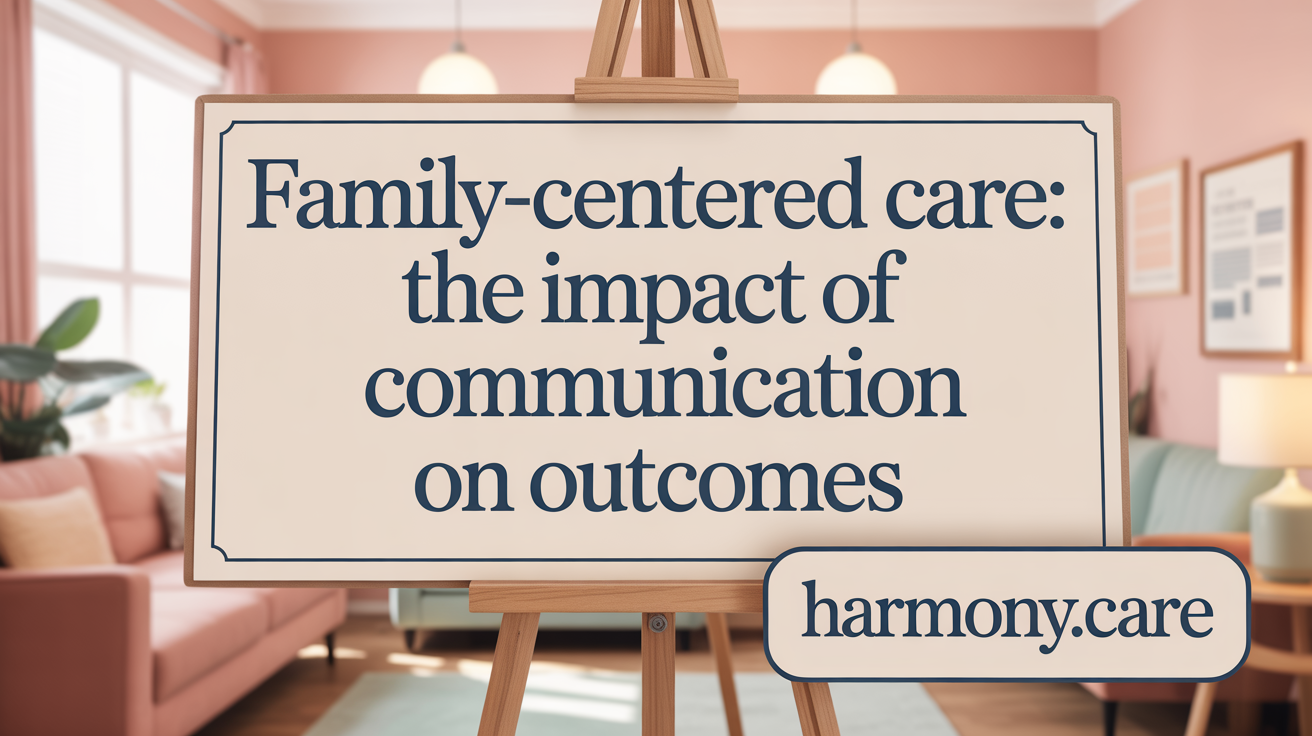
What is the importance of communication with families in healthcare?
Effective dialogue with families plays a vital role in delivering high-quality healthcare. When healthcare providers communicate clearly, respectfully, and compassionately, families become active partners in the care process. This partnership builds trust, reassures families, and helps them feel informed about the patient’s health condition, treatment options, and prognosis.
Open communication fosters collaboration, leading to better decision-making that aligns with the patient’s needs and family values. It also supports families in understanding developmental concerns, medical plans, and available resources, which is especially important in pediatric and chronic illness care.
Utilizing various methods—such as face-to-face discussions, phone calls, or written updates—helps accommodate families' preferences and cultural norms. Sensitive, ongoing exchanges ensure that families are engaged and equipped to support their loved ones effectively.
The benefits of strong family communication extend beyond immediate care. They enhance overall satisfaction, improve health outcomes, and reduce anxiety and misunderstandings. When families are actively involved through transparent and empathetic communication, it fosters a cohesive environment that promotes healing and well-being.
In summary, cultivating consistent, respectful, and culturally responsive communication with families is essential for delivering safe, effective, and family-centered healthcare. It encourages shared decision-making and ensures that care aligns with the patient’s values, ultimately contributing to better health results and stronger therapeutic relationships.
Communication as a Key Driver of Patient Safety and Health Outcomes
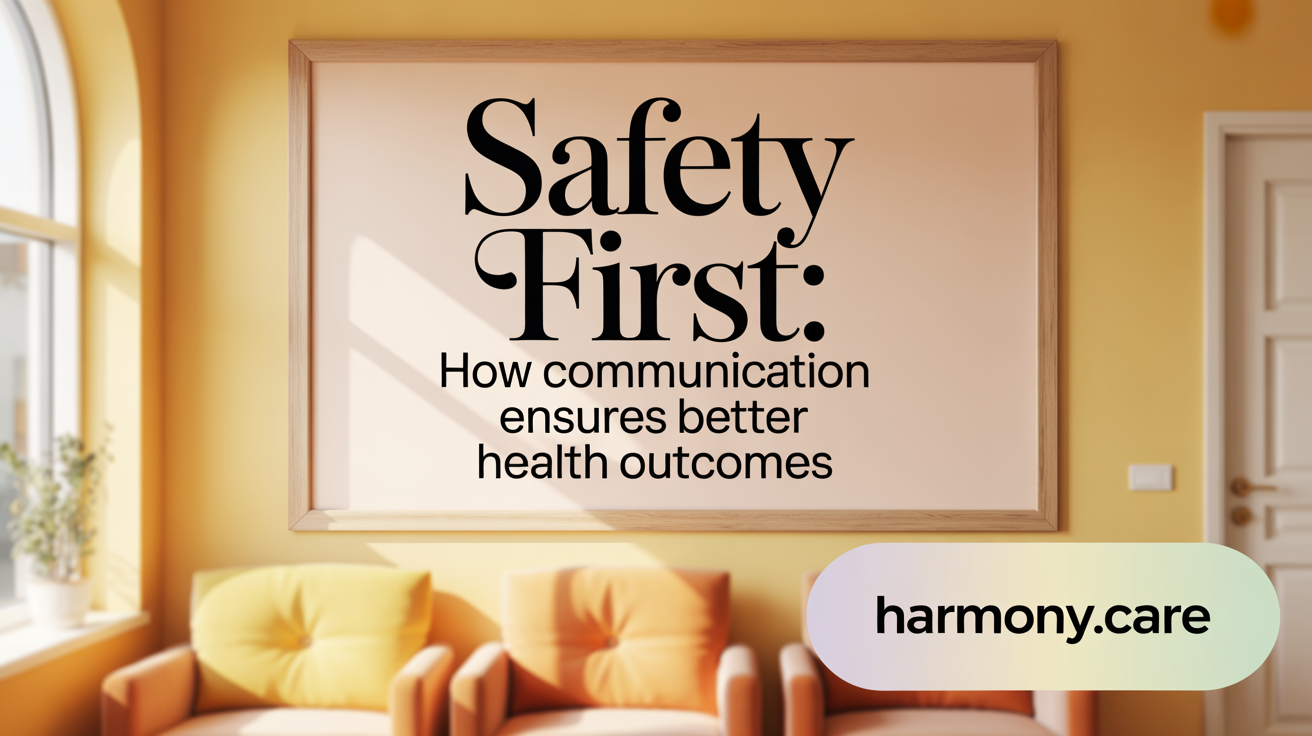
How does effective communication impact patient safety and health outcomes?
Effective communication plays a vital role in ensuring patient safety and improving health results. When healthcare professionals communicate clearly and accurately, it minimizes misunderstandings that can lead to errors such as incorrect diagnoses, medication mistakes, or wrong-site surgeries.
Building trust and strong therapeutic relationships through open dialogue encourages patients and families to adhere better to treatment plans and share crucial information. This collaborative environment enhances decision-making and allows for more personalized care.
Both verbal and nonverbal communication strategies are essential. Verbal techniques like active listening, using plain language, and asking open-ended questions foster understanding, while nonverbal cues—such as eye contact, gestures, and visual aids—support engagement and clarify information.
Good communication also bolsters teamwork among healthcare providers, reducing transitional errors during shifts or care handoffs. When teams utilize structured tools like SBAR and ensure consistency in messaging, the risk of omissions or mistakes decreases.
Overall, effective communication is foundational to high-quality healthcare. It not only prevents errors and safeguards patients but also boosts patient satisfaction, their sense of safety, and overall recovery outcomes. Recognizing this, healthcare organizations emphasize training in communication skills to cultivate safer, more effective care environments.
Enhancing Patient and Family Engagement Through Communication
How can effective communication enhance patient and family engagement?
Effective communication plays a crucial role in strengthening the participation of patients and their families in healthcare. By establishing trust and providing clear, comprehensible information, healthcare providers encourage families to actively engage in care decisions. This transparency helps patients and their loved ones feel more confident and satisfied with the treatment process.
Shared decision-making is a vital aspect of engagement, made possible through open dialogue where patients and families can express their values and preferences. It leads to care plans that are more personalized, ultimately improving health outcomes and patient safety.
Healthcare organizations can support engagement by involving families in governance and policy discussions, through structures like advisory councils. Such inclusion promotes a culture of partnership, accountability, and trust.
Tailoring communication to meet individual needs is essential. Using simple language, visual aids, and timely updates during transitions of care ensures that families understand complex medical information. This approach reduces uncertainties and anxiety, fostering stronger relationships.
Using comprehensive strategies—such as patient education, culturally sensitive communication, and structured tools—closes the gap between providers and families. These practices improve satisfaction, adherence to treatments, and enable families to advocate effectively for their loved ones.
In sum, effective communication not only supports the delivery of high-quality care but also builds a collaborative environment where families feel valued and empowered. This partnership ultimately leads to better health outcomes, higher safety standards, and increased trust in healthcare systems.
Communication’s Central Role in Care Coordination and Management
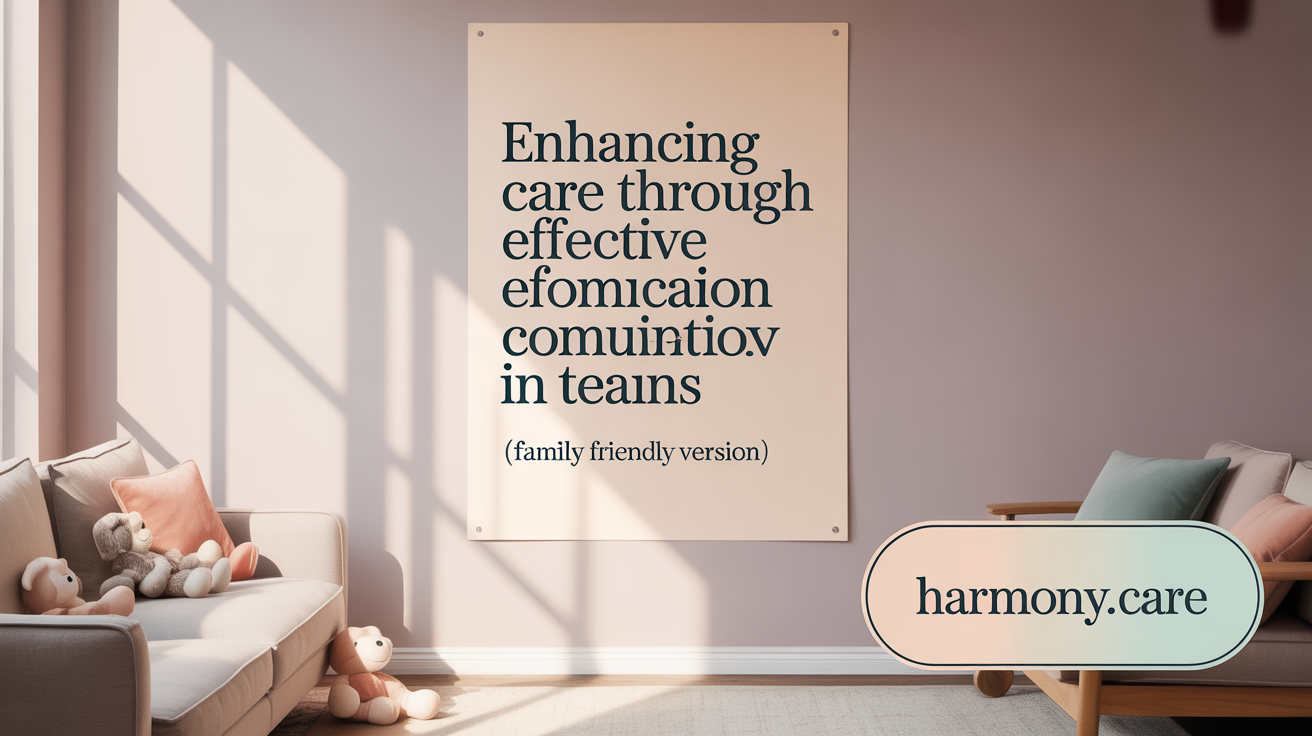
How does communication contribute to care coordination and management?
Effective communication is fundamental to successful care coordination and management within healthcare settings. It ensures that all team members—physicians, nurses, therapists, and other healthcare professionals—share accurate and timely information about patient status, treatment plans, and changes. This continuous flow of information prevents misunderstandings, reduces the risk of errors, and facilitates collaborative decision-making.
Structured communication tools, such as SBAR (Situation, Background, Assessment, Recommendation), are designed to improve clarity and consistency in information transfer. These tools help bridge differences in communication styles among team members and during shifts, ensuring that critical information is conveyed without omission. Models like Crew Resource Management further enhance team communication by promoting shared situational awareness, especially during complex procedures or emergencies.
Effective communication also builds trust and fosters respect among healthcare providers, which is vital for a positive team environment. Clear verbal and nonverbal cues, such as active listening, eye contact, and ensuring understanding through teach-back methods, significantly contribute to better patient outcomes.
For older adults or patients with sensory impairments, employing age-appropriate communication strategies—like visual aids, touch, and simplified language—improves safety and satisfaction. Moreover, open dialogue with patients and their families supports aligned goals, enhances health literacy, and encourages active participation in care decisions.
Strong communication practices enable healthcare organizations to operate smoothly, comply with regulations, and effectively respond during crises. They streamline workflows, support efficient use of resources, and promote a culture of safety. When care transitions occur—such as discharges or transfers—using standardized handoff tools and clear documentation reduces adverse events and readmissions.
Overall, communication is not just a facilitator but a cornerstone of high-quality healthcare. It supports the delivery of safe, effective, patient-centered care by ensuring that everyone involved is informed, engaged, and working collaboratively.
Best Practices and Strategies to Facilitate Communication Between Care Teams and Families
What strategies and best practices facilitate communication between care teams and families?
Effective communication between healthcare professionals and families is vital for providing patient-centered care and ensuring safety. Several approaches can help foster trust, clarity, and understanding.
First, emphasizing empathetic and culturally aware communication is essential. Healthcare providers should be mindful of each family's cultural background, language, and emotional state, showing respect and sensitivity during interactions. Building a foundation of trust involves honest dialogue, active listening, and consistent updates.
Using plain language and visual aids significantly enhances comprehension. Medical jargon can be confusing; replacing it with simple, clear language makes information more accessible. Visual tools like diagrams, charts, and written summaries help families grasp complex concepts and medication instructions.
Technology also plays a crucial role. Interpreters and translation services bridge language barriers, ensuring non-English-speaking families receive accurate information. Electronic health records, patient portals, and secure messaging platforms facilitate ongoing communication and easy access to medical updates.
In addition, structured techniques like teach-back, where families are asked to repeat information in their own words, confirm understanding and address gaps. Regular family meetings with trained staff create space for questions, sharing concerns, and collaborative decision-making.
Addressing barriers such as health literacy, organizational issues, and environmental noise is also important. Strategies include providing written materials tailored to reading levels, scheduling conversations at convenient times, and ensuring a private, quiet environment.
Finally, involving families actively in care planning, discharge instructions, and follow-up reinforces their role and improves adherence. Tailoring communication strategies to each family's specific needs and preferences fosters a respectful, supportive partnership.
By adopting these practices, healthcare teams can enhance care coordination, reduce misunderstandings, and improve overall patient outcomes.
The Crucial Role of Communication During Care Transitions and Handoffs
What is the role of communication during care transitions and handoffs?
Effective communication during care transitions and handoffs is essential for maintaining patient safety and ensuring seamless continuity of care. These critical junctures—such as moving patients between different departments, providers, or healthcare settings—require clear and organized information transfer to prevent errors and avoid adverse events.
During handoffs, healthcare professionals must exchange comprehensive details about the patient's current condition, recent changes, and ongoing treatment plans. Interactive communication methods, including read-backs and clarification discussions, are vital to confirm understanding and accuracy.
Standardized tools and protocols play a significant role in streamlining this process. Tools like SBAR (Situation-Background-Assessment-Recommendation), checklists, and structured formats such as I-PASS or HAND-IT promote consistency and completeness in information sharing. These frameworks help ensure that critical data, such as medication lists, recent test results, and care plans, are accurately conveyed.
Both verbal exchanges and written documentation are important. Verbal communication fosters immediate clarification and rapport, while electronic health records (EHRs) and structured documentation ensure accessibility and clarity across teams.
By adopting these practices, healthcare providers can reduce miscommunication, prevent errors like medication mistakes or duplicated tests, and promote better patient outcomes. Robust communication during transitions safeguards patient safety, supports team coordination, and provides a foundation for high-quality, continuous care.
Identifying Barriers and Challenges to Effective Communication in Healthcare
What are the barriers and challenges to effective communication in healthcare?
Effective communication is vital for patient safety, quality care, and positive health outcomes. However, various obstacles can hinder open, clear, and empathetic dialogue between healthcare providers, patients, and families.
One common challenge is language and cultural differences. Patients from diverse backgrounds may have limited proficiency in the dominant language or cultural misunderstanding of healthcare practices. This can lead to misinterpretation of medical information, reduced trust, and lower adherence to treatment plans.
Environmental and systemic issues also play a significant role. Noisy clinics, lack of privacy, and high workloads can create distractions and discomfort, making it difficult for providers and patients to engage meaningfully. Organizational fragmentation, staffing shortages, and insufficient training further complicate effective communication, leading to errors and misunderstandings.
Emotional and hierarchical barriers can also impede open dialogue. Patients often experience anxiety, fear, or feel intimidated by perceived power imbalances with healthcare professionals. Hierarchical structures within healthcare teams might discourage less experienced staff or patients from voicing concerns or questions, reducing collaboration.
Technical language and complex medical terminology can confuse patients, decreasing their health literacy and participation. When information is not simplified or appropriately tailored, patients may feel overwhelmed or disengaged.
Addressing these challenges requires a multi-faceted approach. This includes cultural competence training for healthcare workers, organizational policies promoting privacy and reduced environmental noise, and the use of technological tools such as interpreters, visual aids, and electronic health records. Building trust through active listening, showing empathy, and establishing respectful relationships are also essential. Ultimately, overcoming these barriers improves communication, enhances safety, and fosters better health outcomes.
Communication in Home Healthcare and Specialized Care Contexts
How does communication differ during home healthcare and specialized care contexts?
Communication in both home healthcare and specialized care settings involves ensuring patient safety and effective care, but each environment presents unique challenges and strategies.
In home healthcare, the focus is on creating a personalized approach. Healthcare providers rely heavily on active listening, empathy, and clarity to build trust with patients. Since many patients in this setting are older or have chronic conditions, communication often involves simple language, visual aids, and tailored strategies to overcome sensory, cognitive, or cultural barriers.
For example, using visual cues, touch, or familiar language helps foster understanding. Building rapport and understanding patients' individual needs and preferences is essential to motivate participation in their care.
Structured communication tools like checklists or the teach-back method are used to confirm understanding and prevent errors. Additionally, caregivers need effective ways to share information with families and other providers, especially during care transitions.
In specialized care settings, communication becomes more complex and multidisciplinary. Healthcare teams include physicians, nurses, specialists, and support staff coordinating care across different departments or institutions.
Discharge planning and information exchange are often supported by advanced health information technologies such as Electronic Health Records (EHRs). Using standardized data-sharing codes like LOINC enhances accuracy during data transfers from hospitals to outpatient or home care.
Care teams in specialized settings also use structured communication frameworks, such as SBAR, to ensure clarity, reduce misunderstandings, and prevent adverse events. The integration of telemedicine and digital tools further streamlines communication and supports real-time updates.
Both environments benefit from culturally sensitive practices and the use of interpreters when needed. Tailored communication strategies—considering language, health literacy, and individual circumstances—help achieve better engagement and safety.
In summary, while home healthcare emphasizes personalized, trust-based interactions and simple tools, specialized care leans toward detailed interdisciplinary communication supported by advanced technology. Both settings require flexible, culturally aware, and structured approaches to promote high-quality, safe, and patient-centered care.
Evidence-Based Approaches Supporting Effective Healthcare Communication
What evidence-based approaches and research findings support healthcare communication?
Research and practical implementations highlight several strategies to enhance communication in healthcare settings. One prominent approach is the adoption of structured communication frameworks like the PC4 Model, which shifts interactions from task-focused to person-centered stages, emphasizing empathy, clarity, and collaboration.
Training healthcare professionals through various methods significantly improves communication quality. Face-to-face educational programs, simulation exercises, and the consistent use of standardized tools such as AHN CARES In Action enable providers to refine both verbal and nonverbal communication skills. Evidence shows that such training enhances patient-provider interactions, leading to increased patient satisfaction and better health outcomes.
Patient engagement techniques also play a crucial role. Methods like teach-back, where patients repeat care instructions to confirm understanding, purposeful rounding, and culturally responsive communication help overcome barriers such as language differences and cultural misunderstandings. These strategies foster trust, improve understanding, and promote adherence to treatment plans.
Leadership commitment and fostering an organizational culture that values empathy, transparency, and open dialogue are foundational for sustained improvement. When leadership actively supports communication initiatives and incorporates them into organizational policies, staff are more likely to sustain effective practices.
Studies consistently demonstrate that quality listening, clarity in messaging, and respectful interaction reduce medical errors, enhance safety, and increase adherence to treatment.
In summary, evidence supports a multifaceted approach—combining structured frameworks, comprehensive training, engagement techniques, and strong leadership—to achieve meaningful improvements in healthcare communication, ultimately leading to safer, more patient-centered care.
Forging Stronger Connections for Safer, Better Care
Communication between care teams and families is the linchpin of effective, patient-centered healthcare. By fostering trust, ensuring accurate information exchange, and facilitating collaboration across diverse settings, good communication prevents errors and enhances patient safety. Overcoming barriers with tailored strategies, technologies, and training empowers patients, families, and providers to engage actively in care decisions. As healthcare evolves, prioritizing open, respectful, and culturally competent communication will continue to improve health outcomes, patient satisfaction, and the overall quality of care.
References
- Professional Communication and Team Collaboration - NCBI
- Quality communication can improve patient-centred health ...
- The Importance of Communication Between Home Care Providers ...
- 6 Reasons Effective Communication Matters in Health Management
- Communication During Transitions of Care | PSNet - AHRQ
- The Importance of Open Communication Between Families and ...
- Communicating with patients' families during hospitalization
- A literature-based study of patient-centered care and communication ...
- The Importance of Effective Communication in Nursing | USAHS
